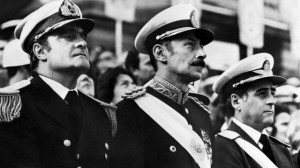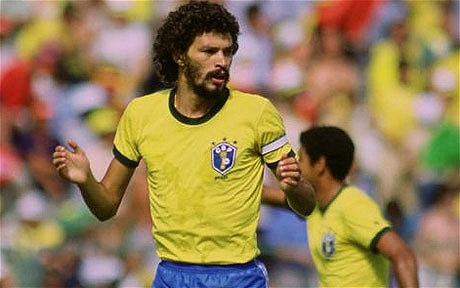As breaking news to no one, Brandi Chastain ripped off her jersey after the famous 1999 Women’s World Cup penalty shootout final victory, punctuating the U.S. women’s national team’s second taking of the top prize in soccer with a classic photo finish, cameramen lapping up her iconic knee drop and sports-bra reveal. The Americans won the debut trophy in 1991, but 1999 represented the moment when the team first captured the hearts and minds of the American public. Sixteen long years then transpired before the team and country would again celebrate another, on both the day of the 5-2 victory over Japan in Vancouver on July 5 and again in New York City at a ticker tape parade custom ordered for the occasion.
In nearly as notable news, England shrugged off the indifference of a nation to make the semifinals and dispatch Germany in the third-place playoff of the 2015 Women’s World Cup, while Australia took on the mantle of giant killer and dumped Brazil out of the tournament to the shock of everyone, even perhaps themselves.
Seemingly endless hype about the ’99ers surrounded the 2015 tournament, with all the attendant pressures for the female American soccer players competing in this millennium. Germany had usurped the American States United for world number one for the first time in eons, for co-dominance with their male counterparts in the world game. But the current crop of the U.S. women’s national team has now lifted Women’s World Cup trophy, and for a record third time, reasserting top dog status. Perhaps most importantly, everything begins anew, the team has shed the burden of pent-up expectations and the country has identified a generation of new stars.
As for a veteran like Abby Wambach, the all-time highest-scorer in the international game at 183 goals, she has tidily wrapped up any and all unfinished business after semifinal losses in 2003 and 2007 and avenged the penalty shootout loss to Japan in the 2011 final after the 2-2 draw. Officially now retired, Wambach can finally call herself World Cup champion. Of course, she could previously call herself two-time Olympic Gold medalist and 2012 FIFA World Player of the Year, so Wambach hadn’t exactly led a life of abject failure.
American media had conditioned the country to expect success from the not-hands of Abby Wambach or Alex Morgan, but in the end the star that burned brightest bore the jersey of number 10, Carli Lloyd.
Making World Cup history, Lloyd became the first woman and only the second human to score a hat trick in a final—the fastest/faster at that, three goals in the first 16 minutes. (Geoff Hurst scored his hat trick over 120 minutes for England in 1966.) She added the three speed goals achievement to her stat of the only soccer player ever to score match-winning goals in back-to-back Olympic gold-medal games in 2008 and 2012. Lloyd won the Golden Ball as the tournament’s best player, but missed out on the Golden Boot, despite equaling the six-goal haul of Germany’s Celia Sasic, having played more minutes. For those looking to argue Lloyd’s case vis a vis the pitch-time tie-breaker rule, she scored all her goals in the knockout rounds, whereas Sasic scored three in the flat track 10-0 group stage demolition of perhaps the weakest team at the tournament, Ivory Coast. (At the time, Sasic had scored the fastest hat trick in Women’s World Cup history, in 31 minutes, which Lloyd bested in nearly half the time in the final.)
Before the Japanese ever got their bearings in the match, America had run over them, backed up over the bodies, run them over again, backed up again, and then run them over one last time for good measure. Ultimately, the last couple were overkill in payback for the 2011 final loss. The match effectively ended even before Lloyd completed her hat-trick that put the scoreline 4-0, though that safety would only reveal itself later. Lloyd scored twice in the opening five minutes, followed by Lauren Holiday in the 14th minute followed swiftly by Lloyd’s long-distance halfway line strike at the 16th minute mark.
Over the course of seven games, the Americans started off slowly but then steadily improved. Most importantly, they never lost, grounded on a rock-solid defense, gathering form, and with a slice of luck, the right formation, on their way to their most comprehensive win of the tournament on the final day.
Americans had the height advantage over the Japanese, so aerial set pieces that pundits expected the Japanese to contest and lose partly came to pass, only minus the aerial. The first two goals came from set pieces, but not from the air. The U.S. instead went low and direct. The first corner deliveries drove hard to the feet and then straight into goal for Lloyd’s first two strikes, faking out the opposition not once but twice, the Americans blitzing their way to 2-0 on the scoreboard.
After the lone goal conceded to Australia in the opening match of the tournament until Japan’s 27th minute goal in the final match, the the U.S. defense went 513 minutes without surrendering a goal. In the early stages of the tournament, when America failed to score with freewheeling ease, its miserly defense proved vital. When that changed and the goals came, the team could absorb an event like the Julie Johnston own-goal that bestowed Japan a second-half goal.
In hindsight, suspensions to Megan Rapinoe and Lauren Holiday proved fortuitous in that they caused a rejigger of the lineup. Coach Jill Ellis and the team found the best formation, perhaps by accident, perhaps by design—either way, one that gave Lloyd free rein to roam and go for goal while others retained possession, tracked back and covered the central midfield and defensive duties that previously blunted her attacking instincts.
As the tournament signaled a new chapter in U.S. soccer, it also turned out to be the making of two other English-speaking nations, England and Australia.
England reached the final four of any tournament for the first time since 1990 (aside from the ’96 Euros) and the women’s team logged its first major success of any real note ever. Australia reached the quarters, a major World Cup milestone for the former penal colony.
Every four years, women’s soccer appears on the world’s scanners. Or not, depending on the nation. The U.S. belongs to the former, England began June decidedly in the camp of the latter. A look at the U.K. papers showed perfunctory interest at the beginning of the tournament, which itself dwarfed the actual interest of the actual man on the street (minimal to none). As the team beat rivals in a manner totally unlike the men’s national side, however, the English drive to support a homegrown winner ramped up. This became especially pronounced in the first knockout round when Lucy Bronze scored from long-range against Norway to send the team into the quarterfinals and then headed a crucial goal against Canada to help seal a berth in the semis. Staying up past midnight to tune in, 2.4 million viewers in the U.K. watched England narrowly lose 2-1 to Japan, but by then women’s soccer had firmly positioned itself in the national spotlight.
Australia emerged from the World Cup as the Brazil Slayer, just as England did the Anonymity Slayer. Australia’s 1-0 victory over Brazil heralded the 2011 Asian Cup champion and 2015 Asian Cup runner-up as a true force for the future. Brazil came runner-up in 2007 and not long ago ranked world number two. Five-time World Player of the Year Marta, one of the best women’s players to ever play the game, still calls the shots for club and country. The team easily won its group. Australia took a scalp for the ages, and betrayed no sign that the performance represented any form of a freak win.
Professional matches in the women’s leagues of England and Australia see attendance numbers of approximately 800 to 1000. Broadcasters have not tripped over themselves to invest in TV rights, but the viewing figures for the World Cup could change that, although the variables of a one-off tournament and international summer fever have a part to play, and more than once that excitement has failed to carry over into the regular season of many leagues, not just women’s leagues of those countries. One must include America in that discussion, as well.
However, the viewing figures give pause for thought.
In the U.S., each group stage match drew in more viewers. The 3-1 against Australia opened to 3.3 million viewers, the largest television audience for a Women’s World Cup group stage game on record, triple that of the 2011 group stage opener in Germany, though that match occurred on a weekday during office hours in the U.S. (The previous high reached nearly 2.5 million in 1999 during the U.S. incarnation of the tournament.) The scoreless draw with Sweden averaged 4.5 million. Finally, for the final group stage match, the 1-0 win over Nigeria averaged 5 million viewers, the third-largest audience ever for a Women’s World Cup match to that date, behind only the 1999 and 2011 finals but of course, the tournament kept forging new records each day. The Nigeria match numbers nearly quadrupled the 1.3 million for the third U.S. group stage match in 2011, but again, an unfair comparison, as that match took place a weekday during office hours in Germany.
The Round of 16 match in which the U.S. women’s national team beat Colombia 2-0 held more or less even with 4.7 million viewers. The U.S. game against China in the quarterfinals clocked 5.7 million viewers. The semifinal between USA and Germany attracted 8.4 million viewers—the third largest audience ever for an English-language telecast of women’s soccer in the States. Ratings rose precipitously as the Women’s World Cup continued, with the final the apex of shattering past records.
The U.S. women’s national team victory night in the July 5 final in the thrashing of Japan made for action-packed early viewing and blew the roof off the previous ceiling of soccer TV ratings, and not simply by a small margin. The match stands as the most watched soccer game in U.S. history, men’s or women’s, and may hold the title for quite some time. A mammoth 25.4 million viewers watched the Women’s World Cup finals, according to Nielsen ratings data, smashing the previous record, the 18.2 million that tuned in for the 2014 Brazil World Cup men’s group stage U.S. vs. Portugal that so nearly ended in a U.S. victory but which in fact concluded in a 2-2 draw. At its peak, in the final 15 minutes, the TV audience actually peaked at 30.9 viewers.
In the U.K., around 500,000 people stayed up until midnight to watch the final, unlike England’s semifinal against Japan for which the match drew a peak audience of 2.4 million in the U.K. despite a kickoff time of midnight. At the beginning of the tournament, the English media essentially ignored the team and the tournament in general, broadcasting on backwater stations when at all. However, once England bested Norway, featuring with the sensational Lucy Bronze kick in the quarterfinals, the team suddenly found itself live on prestige channels like BBC 1, gaining solid viewership numbers in the wee hours of the morning.
Before this summer’s tournament began, the biggest American TV viewerships in women’s soccer ranked accordingly: the U.S.-China Women’s World Cup final in 1999 topped the list with 17.97 million and the U.S.-Japan 2011 Women’s World Cup final came took silver with 13.46 million. Those events each now move down a rung, as does the overall men’s record.
For comparison, the viewing figures for the July 5 match average audience exceeded every game of the NBA finals.
Expected soccer story lines didn’t come to pass, but what did come to pass made perfect sense in hindsight and from that vantage, all can be reordered from the start to fit the ending of the current present/recent past. And that’s what gets remembered. No one will remember that everyone expected Morgan to explode. Everyone will remember that Lloyd did.
A month on from the June 6 kickoff, things have already changed. The question is, for how long. The sun may have long since set on the British Empire, but the Daughters of the British Empire have risen again. America, England and Australia emerged from the tournament as definite winners, in differing but undeniable degrees, theoretically not to be forgotten as quickly as in years past.
As with any international tournament, one can get sucked in—the matches come fast and furious, and they’re the only game(s) in town, free from competition from the Premier League, the Champions League, La Liga, et al (granted, the Copa America also put on many entertaining displays in the South American men’s international game). The question becomes one of longevity and sustainability after the tournament. Will people keep on watching after the final whistle of the finals? Will spectators show for women’s professional leagues. In the past, the answer has been no. In the present and future, it remains to be seen. But signs look more promising than ever, for a few reasons.
When the tournament approached and then began with the U.S. winning games unconvincingly, pundits pointed to the tournament as the turning point when the technique of other countries would at last surpass the physicality of the Americans. The clunky 4-4-2 that centered on a slower, out-of-form Abby Wambach resulted in an attack lacking bite and creativity. Ellis had taken few personnel risks, brought in hardly any new players, barely rotated. Although the team had strength in depth, that depth had barely gotten anything like regular games pre-tournament. Hope Solo kicked ass on and (controversially, allegedly feloniously) off the field, but should she have received an injury or suspension, no backups had any minutes between the sticks. Expected it-girl Alex Morgan remained injured, continually foiled in reaching full fitness. She started to rack up more minutes, but goals did not arrive in direct proportion.
Teams from countries with thriving leagues had indeed improved greatly in terms of technical skills, particularly third-ranked France, but across the board teams had closed the gap. But to call the U.S. purely a physical team at the expense of technique or tactics is overly reductive. Players can be both technically gifted and amazing athletes. They can play long balls to a dominant striker without it being an act of unimaginative desperation. For an imperfect analogy in the men’s club game, think Chelsea, long balls with lethal finish and attacking bite. The criticisms came in the stages of the tournament when that lethal finish lacked or went missing.
Some wondered whether the nature of a blowout final was bad for the women’s game, but few held that opinion after the mesmerizing 7-1 demolition of Brazil by Germany in the 2014 World Cup semifinals. Conversely, many point to Japan’s poor defending against Lloyd’s first two blitz goals. If so, then so much the better for the health of the women’s game. The blowout final would and could have been a much more closely contested affair.
A couple points for why a shock and awe blowout was good:
First, consolidation of the core audience, the U.S. base. The day after America’s birthday party for itself, sixteen minutes into the Women’s World Cup final on July 5th, the shock and awe recaptured the ‘99er love that had gone AWOL. The multitudes watching renewed their investment in their team, renewed their memberships as soccer moms/dads signing up daughters in youth leagues, and girls watching saw bona fide champions broadcast live and direct. Should it be that America has had its last hurrah, the final clinched a whole new clutch of recruits, suggesting it won’t be the last hurrah.
Second, after all the nil-nils and game-deciding shootouts of Copa America, people wanted goals, and goals they got. Did it damage the women’s game? Since when do viewers hate goals, especially insatiable, win-hungry Americans? Woe to those with poor feeds or tuning in late. The eventual 5-2 seemed an exercise in whether the Americans would blow that sort of mammoth lead. They would not.
Afterwards, in the aftermath, does the international women’s soccer landscape adjust positively to the fallout of a blowout, or react positively to the fertility of the bomb, the boom? The U.S. women’s national team put an end to a sixteen-year barren spell in the World Cup, although several consecutive Olympic golds arrived in the interval. The team had waited, the team had finally ceded world number-one to Germany before the tournament began, but when victory came, they did deserve top prize and the manner of their victory, the nature of the play, did contribute to the benefit of the game.
The U.S. had come under heavy criticism in the group stage for not scoring with abandon. What better answer than to score in the final with abandon? Wambach had complained during the low scoring run that the turf was to blame. She may or may not have been right. She herself may not have been vindicated, but in the end the team won, and as she watched from the bench and came on late, she accepted her elder statesman role. She had either temporarily lost her A-game, got thrown off her game due to the turf or perhaps her professional-level game had just inevitably departed as her career has now wound down. Wambach the Trusted Clutch Finisher represented one main narrative gone awry in the World Cup, just like Alex Morgan the It-Girl. In the end, during the ticker tape parade, it didn’t matter, at least not to the celebrating American public.
To backtrack, the controversial artificial turf, in addition to injuring players, certainly exacerbated the U.S. team’s (and others’) problems with clinical finishing and precise passing game. However, everyone played on the same surface. Passes slightly overstruck went uncaught, long ball strategies involved more speed than players possessed. But, that’s how it goes, that’s how it went.
In their off hours, even in the Group of Death, the Americans still seemed confident enough, in their defense game to get them through to the knockout stage. Undoubtedly, the offense improved once Lloyd took a more forceful role going forward. Once that happened, the formula of power, precision and athleticism finally blended and clicked. The change of formation that freed Lloyd up definitely changed that narrative.
The final would be bad for the women’s game if it merely showed the superiority of physicality over technique, but that’s not what it was. Lloyd put on a master class against a Japan team not at its best. The U.S. team finally gelled after searching for form and the right formation. All the women’s teams in the tournament had improved over the four-year interval. Japan had an off-match, but the Mizuho Sakaguchi goal against Holland that followed the deft, tight passing, backheel and tricky dummy right in front of the goalmouth showed pure class from both herself and her teammates.
In the women’s game, different teams showed they have developed different strengths, some with very good possession and passing technique, like France and Japan. The U.S. has a more direct style incorporating technique and physicality, much of it long ball—not the sexiest soccer term. To compete at the top level in years to come, the U.S. must inject more technical style and incorporate more technique with their athleticism, like Germany, for example. They will have to, if they wish to stay competitive, but for now they have just beaten Germany, Japan and all comers, so no one need sound the alarm too hysterically.
The scoreline certainly did no harm to where viewers won’t watch again. If anything, the opposite. Would the masses prefer another nil-nil? To women’s soccer’s largest viewing audience, the U.S., it hooked people right back in again.
In England, the World Cup effect has already seen an uptick in Women’s Super League interest, but it remains far too soon to declare any sort of real turnaround. Manchester City Women, which features five English internationals, including Bronze, defeated Birmingham 1-0 and set a new attendance record on Sunday with a crowd of 2,102. Sponsors, league officials and broadcasters will watch with interest to see if the trend continues, in England and elsewhere, but 2,000 spectators still represents a near-grassroots level of support.
Neither FIFA President Sepp Blatter nor this number-two, Secretary General Jérôme Valcke attended the Women’s World Cup final to present the trophy, underscoring once again the continuing disrespect for the women’s game in the shadowy power corridors of FIFA. One may recall Blatter’s infamous, endlessly embarrassing hot-pants quote from 2004. “Let the women play in more feminine clothes like they do in volleyball,” Blatter opined grandiosely and idiotically, like a modern day Marie Antoinette of soccer, by way of volleyball.
“They could, for example, have tighter shorts. Female players are pretty, if you excuse me for saying so, and they already have some different rules to men – such as playing with a lighter ball. That decision was taken to create a more female aesthetic, so why not do it in fashion?”
Women’s soccer did not, in fact, use a lighter ball, though the first World Cup did insultingly reduce halves to 40 minutes, assuming that women couldn’t last a full 90, while simultaneously scheduling matches with fewer rest days, thereby actually making for a more grueling schedule than the men’s tournament.
Meanwhile, in 2015 as women kick ass onfield, Blatter remains Zurich-side sipping Swiss Miss in a state of curtain-twitching terror. The day of the final, Blatter told the German newspaper Welt am Sonntag, “Until everything has been cleared up, I am not going to take the risk of traveling.” He clarified, “”Not because the Americans have anything concrete against me, but because it would cause a public stir.” Canada poses notorious travel risks for Swiss nationals fearing prosecution. And public stirs.
Blatter will, however, travel to Russia in late July for the qualification draw for the 2018 World Cup. Apparently that would pose no risk of public stir. Or perhaps it pertains to the fact that Russia does not have an extradition treaty with the U.S.
Blatter once declared, apparently with no genuine meaning, that “the future is feminine.” Perhaps among he mixed up his words, meaning the future is fraught with exile, extradition-dodging and bunker-dwelling.
***
[A special thanks to Larry Weinstein for many of his points in internal emails that I incorporated, concerning overhit passes because of the turf, the long ball game and the 7-1 Brazil killing. I may have missed a couple other points. Also to Sean Mahoney regarding the blend of technical skills/athleticism of the USWNT and John Lally for some factual corrections. I emailed several of the CF crew about the matches and I don’t want to claim their ideas as my own. As well, many ideas came in response to justifying my viewpoints to Eddie Guo, so he gets a shoutout, as well.]









![[soccer1204]](http://si.wsj.net/public/resources/images/OB-QW036_soccer_D_20111204121118.jpg)